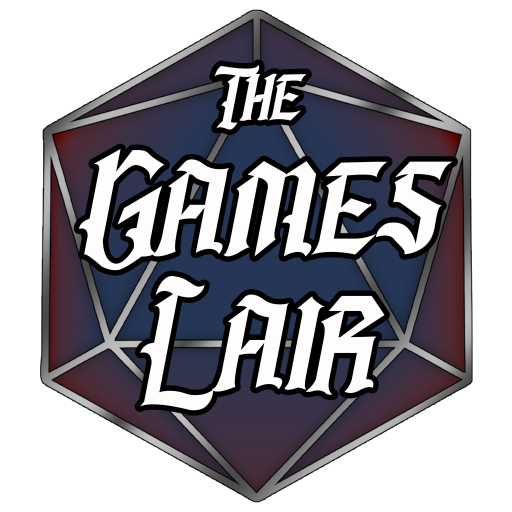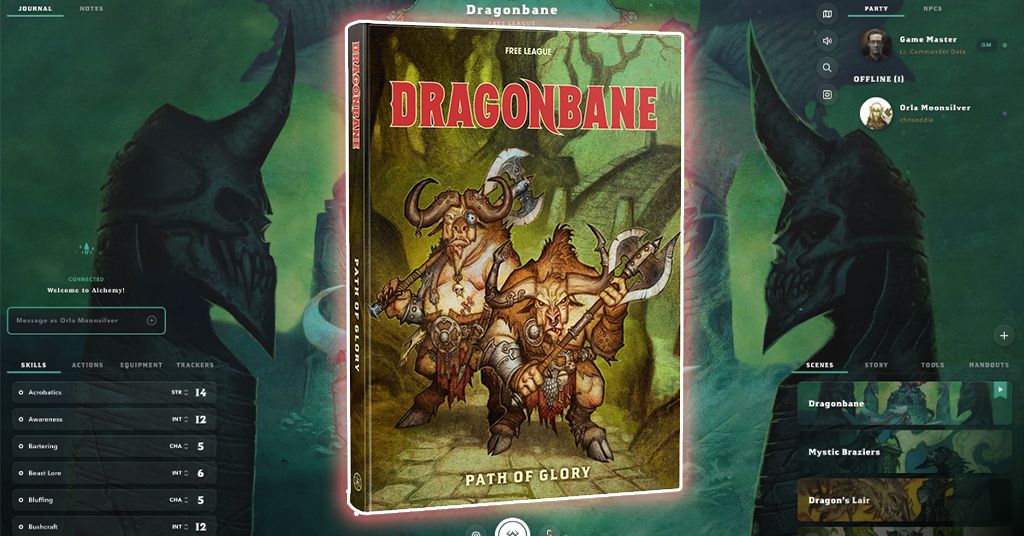DISCLAIMER: I received a complimentary copy of the rulebook from Darrington Press. However, I did not receive any kind of payment for this review.
SPECIAL THANKS: Thank you to Darrington Press (especially Alex Hill) for sending a copy of their core rulebook for me to review. I also want to express my gratitude to the amazing community in the Darrington Press Discord server for their wonderful insights, discoveries, challenges, and conversations that have helped me write this review. Finally, I’d like to thank Vicki Snyder, Sophia Thompson, Kat, Neil-Shane, and Game Masters (GM) Chris Thomas and Jason Houghton with whom I am currently playing Candela Obscura, as well as Valkyrie’s Vault for hosting our game sessions.
Earlier this year, the hit live-stream roleplaying group Critical Role announced that their publishing arm, Darrington Press, will release a new roleplaying game (RPG) called Candela Obscura. Designed by Rowan Hall and Spenser Starke, Candela Obscura is a horror paranormal game set in the 1900s in a dark magick-filled fictional world that’s not much different than our own. The game was available to play at GenCon earlier this year, and Critical Role will be live-streaming the third chapter of their Actual Play of the already popular game. The core rulebook was released on November 14th and is available for purchase at their online stores as well as local gaming stores.

GAME INFORMATION
Read the full creative team credits here
System: Illuminated Worlds
Genre: Horror, Paranormal
Designer(s): Rowan Hall & Spenser Starke
Publisher: Darrington Press
Year Of Release: 2023
REVIEW
If you want to watch the video version of this review, check out the YouTube video below:
As a fan of Critical Role and someone who recently started to play roleplaying games, I was really intrigued to hear about Candela Obscura. I’m not particularly fond of the horror genre, but I gave it a shot by watching their Actual Plays and also played a one-shot assignment, Dressed To Kill from their Quick Start Guide, at GenCon. Darrington Press sent me a complimentary copy of their official core rulebook of the game, and here are my observations and thoughts on it.
The Book Design & Artwork
From the start, the book cover is deliriously captivating. The standard edition cover reflects the theme and the set seen on the live-stream show and beautifully captures the essence and spirit of the game. In fact, it’s hard to tell what the actual color of the cover is, given that it can look dark green or black depending on the lighting, and I wonder if it’s intentional that way to show the two realities of the world of Candela Obscura: the Mundane (our world) and The Flare (the world of magick). The Limited Edition is also just as beautiful, with a brighter green color that’s highlighted with golden emboss that emanates the hopeful light of Candela Obscura, the secret organization that attempts to protect the world from The Flare. As captivating as the limited edition is, I personally prefer the style of the standard edition just because I enjoy the grittiness it reflects.

The artwork inside the book is just as gorgeous as the covers. Using a watercolor painting style for the openings of the chapters, the art does a phenomenal job of capturing the feel of the game’s themes and aesthetics, providing a murky, ambiguous picture of the world, while allowing players to feel connected to it enough to get a sense of what it would be like to live in it.

The design of the book itself is also to be commended. Although it’s a rulebook, it was designed for it to feel like an actual living and breathing document and artifact from the game’s world. Included in the design are additional newspaper articles that give Easter eggs and world-building details for the reader to enjoy, handwritten notes from a Lightkeeper that tell a framing story for the reader to be engaged and enthralled with, and hidden codes, symbols, and messages to try and decipher. These additional details definitely give the core rulebook an exciting way to interact with an abstract and fictional world. For me, the difficult part about this design was the handwritten notes as they were incredibly difficult to read so it took longer to read and understand, which prevented me from being able to enjoy and stay engaged with that part of the design consistently throughout the book.

Outside of the artwork and the layout, Darrington Press really took care of making sure that although this is a horror game, that does not mean that it should be used as a way to explore real-world realities horrifically. A commonplace set of tools that many Game Masters (GMs) use is a series of roleplaying game safety tools that allow the GM and players to communicate about how safe the players feel about exploring certain themes in the game. They also make sure to include statements to clarify how elements of the game should not be used as an excuse to explore that theme in a stereotypical or derogatory way, such as how scars work in the game vs. real-life trauma scars. It’s clear that they integrated these statements and parameters intentionally in order to create a safe space for all players of the game.

Darrington Press has also partnered with Demiplane, a platform for digital tools and content for tabletop roleplaying games, to provide a character creation tool and a digital version of the rulebook for Candela Obscura. This is a really well-done resource and is currently on sale for $19.99 (at some point, the price will jump up to $29.99).
The System & Mechanics
The system (a set of rules for how to play a game based on a character’s actions as well as the dice results of its player) is a new system developed by Darrington Press called Illuminated Worlds. Heavily influenced by games such as Blades in the Dark and Vaesen, Illuminated Worlds operates on a series of six-sided dice (d6 for short), using the results to determine if the character achieved failure (1-3), mixed success (4-5) or success (6). Players will also have certain abilities based on their core character roles as well as their team (called a circle) that will actually affect the story of the game.
Unlike the popular d20 systems that one associates with Dungeons and Dragons, Illuminated Worlds really focuses on the collaborative storytelling aspect of the game. Therefore, there won’t be stat blocks for characters, calling for an initiative roll or how much damage someone will take based on a dice roll result, but rather the player will share what their character wants to do and the die roll will determine how successful they are.
To read more details about the gameplay and system, check out the Quick Start Guide on Demiplane or download it from Darrington Press.


One of the areas that is a bit confusing mechanically here is how drives (ability to add extra dice to a roll) connect to a role’s action. For example, a Muscle Soldier will have the majority of their action points begin in the Nerve category, with two dice for Move, two for Strike (with one special die called gilded), and one for Control. However, the rulebook states that their primary drive is in Intuition, even though the character will not have any action points in that category to start off with (although the player may certainly add action points later in the character creation stage). Mechanically it makes sense why one may want to have more drives in a category where their action points are not powered since that category (i.e. Nerve) will already have built-in a way for the character to potentially earn more drive. However, since this is a game of collaborative storytelling, it doesn’t really provide a rationale as to why the character is initially built this way, and so this could make it challenging to connect the mechanics to the roleplaying in character development.
(UPDATE November 29th, 2023: Game designer Rowan Hall responded to my question about this in the Darrington Press Discord server and shared that “drive represents the areas in which a person is prepared to spend energy (helping themselves and others). The result is not as specialized as training, but more flexible due to willpower.”)

During gameplay, characters can get hurt as they explore the world of Candela Obscura. Whenever they participate in an activity that results in a fail or mixed success result, characters can possibly receive “marks”. These marks can be in the form of a body mark (involving physical harm done to the character), a brain mark (something traumatic that impacts the character mentally), or a bleed mark (as a result of interacting with supernatural phenomena). If a character receives four marks in any category, then they will receive a scar, which represents a permanent change in the character and will result in the player having to move a point from one action to another to show and represent how that character has changed. Where marks are possible to heal between assignments, scars are even harder to heal, if at all. A character can receive three scars in a game.

Many people have noted that there is a change in the core rulebook from what was previously communicated to GMs and players about scars. Although the Quick Start Guide did not mention what to do when a character receives a fourth scar, Critical Role’s YouTube video explainer on how to play the game specifically states that taking a fourth scar means the character is permanently incapacitated or dead. However, the core rulebook does not explicitly state what happens when a character receives a fourth scar. This may have been a design decision to allow GMs and players to decide what happens to the character when they receive a fourth scar for creative storytelling purposes. But for those who are new to the game, the omission of an explanation can leave a lot of people confused (some people are already asking this on Reddit). This could have been avoided by simply having a statement saying that once a character receives a fourth scar, they’re permanently prevented from continuing on in the story and that players and GM can come up with a conclusion on what happens to them. (It also may be possible that this was an oversight as well, which is most likely, but Darrington Press has not addressed this at the time of this article).
(UPDATE November 22nd, 2023: Since the publication of this article, Darrington Press has released an FAQ page on their website that clarifies this issue.)
The Setting

The world of Candela Obscura takes place in 1907 in The Fairelands, a region in the country of Hale. The capital city, Newfaire, is the main robust city of the region, with numerous other areas surrounding it. The setting is described as the early onset of the industrial/electric revolution, with electricity having just been developed recently. Half of the core rulebook is committed to the details of the world of the game, which builds up the world and lore more expansively than what viewers and players were accustomed to previously.
The designers paid special care to the book and the development of this world to ensure that some of the larger issues that exist in our current world are not a reality of this world by establishing that major phobias (racism, sexism, homo/transphobia, ableism, etc.) do not exist in this world systemically (though there still may be some bad actors present). Some of the ways they do this are by including preferred pronouns of non-playable characters (NPCs) as well as playable characters (PC), art that is inclusive and represents people of color (POC), and by normalizing all relationships. This intention of inclusion to create a safe space in a world of horror is truly aspirational. (On a personal note, as someone who has hearing loss, I was touched by the inclusion of a character that also suffers from deaf/hard of hearing).
Although the designers created an expansive detailed lore about the setting of the game (38 locations and a whole section on what the Fairelands are like), they give GMs and players enough to get started and to be able to add to the story that they want to tell in their game. This is a commendable choice; providing barely enough detail so that doesn’t landlock the game and story the players want to explore, and removes the fear of contradicting what is established in the official lore of the game. Some players and GMs may struggle with the lack of detail though, and there are times when the details provided in this setting are unclear in how the world works. For example, Candela Obscura is supposedly a secret organization but there are a lot of instances in the core rulebook where it seems so many people from a number of organizations and affiliations know and work with them that it makes one wonder if they’re really a secret organization.
Another example – The Office of Unexplained Phenomena (OUP) is an underfunded branch of the Periphery (law enforcement of the country of Hale), and yet it says that very few people, even those with high clearance, really know what they do. Typically, an underfunded agency wouldn’t have such lock-tight secrecy as this, so it makes it a challenge from a storytelling perspective to explain some of these somewhat contradictory statements or foundations in the story. Having a bit of clarification could go a long way to allow players and GMs to understand more about how these kinds of relationships work to make it easier to build on to the story and lore of Candela Obscura, rather than trying to find a complex way to shoehorn their story to make it work.
(UPDATE November 29th, 2023: Game designer Rowan Hall responded to my questions about this in the Darrington Press Discord server and shared that Candela Obscura is not known to the general public but the people and organizations mentioned in the book that know about them are one of the few who does. She also shared that these details are designed to give GMs and players jumping off points instead of a hardline fact to allow flexibility for gameplay.)
The Roleplay Experience
I’ve been fortunate enough to play this game at GenCon as a one-shot, as well as play this game online on a weekly basis and in person on a monthly basis. As someone who is new to roleplaying games, this is a game that I find really exciting and different from any other game I’ve played. The game is completely designed to focus on character and story-driven play, rather than a dice-driven game such as Dungeons And Dragons (to be fair, DnD can definitely be character and story-driven, but it also could bypass that as well). It’s a collaborative effort to tell a story from a character’s perspective and to work with other players and the GM to discover the story as it unfolds.
What I love about this approach is that this allows the players to be more involved with telling the story than relying on the GM. In one of our gameplay sessions, a player had their character pull out a bleed detector. Instead of the GM describing what it looks and sounds like, the player has to do this, which creates an invested experience for the player, having a sense of contribution to the world they’re playing in. Allowing these kinds of choices for the players provides agency for them, which in turn creates a more engaged gameplay for players to try to develop their character and story to their liking as much as possible.

I did find it interesting that the rulebook suggests using the character creation process of selecting roles, specialties, abilities, etc. to help a player develop the character’s backstory. While this is entirely possible and a good way to create a character for those who are not as creative in this area, a player can also create a backstory first, and then use it to determine actions and abilities. For example, in a character I created, I came up with a story where a former soldier interacted with an entity from the Flare and can now interact with objects that have been imbued with bleed. Usually, a soldier wouldn’t be heavy in action points for intuition, especially for sense rolls that focus on more of the arcane and magickal. But because of my character’s story, it completely made sense for me to select an action point or two in sense to help represent this character’s story, even though a soldier wouldn’t necessarily have any direct tie-in abilities with magick.
FINAL THOUGHTS
This game is ideal for anyone looking for a horror/paranormal game that focuses on collaborative storytelling rather than dice-rolling mechanics. Although there are some barriers and clarity challenges in some areas of the core rulebook, this game should be a top contender for roleplaying game of the year.
REVIEW SCORES
Book Design & Artwork: 9/10
Mechanics: 9/10
Setting: 8/10
Roleplay Experience: 9/10
Overall: 8.75/10




![Darrington Press Officially Launches Open Beta Playtesting for Daggerheart [PRESS RELEASE]](https://thegameslaircom.files.wordpress.com/2024/03/screenshot-2024-03-13-at-8.50.35e280afam.png?w=656)
Leave a comment